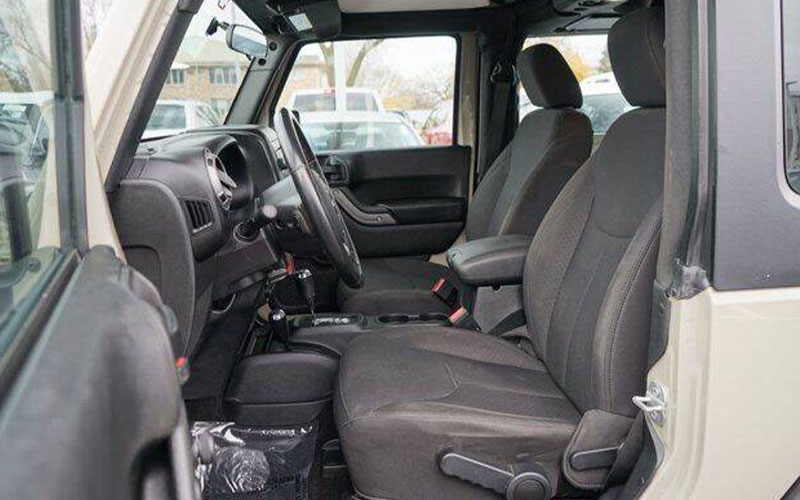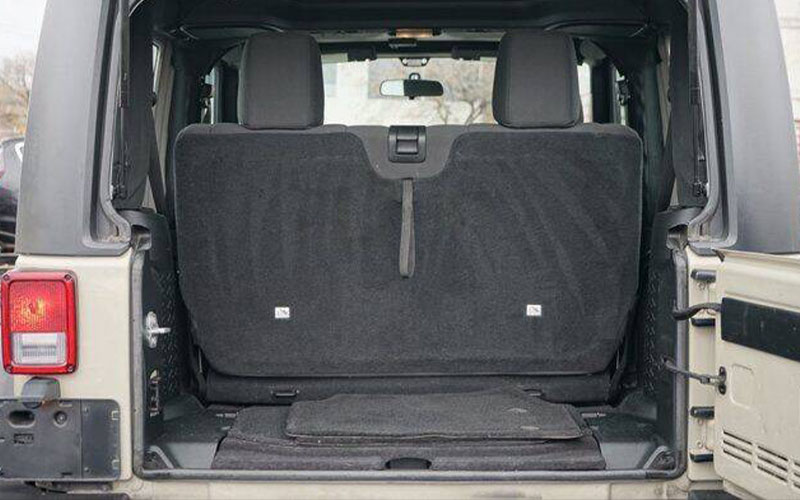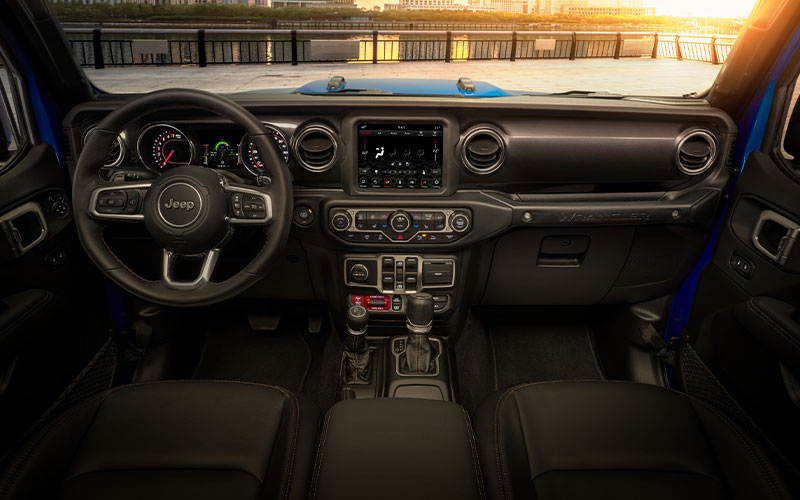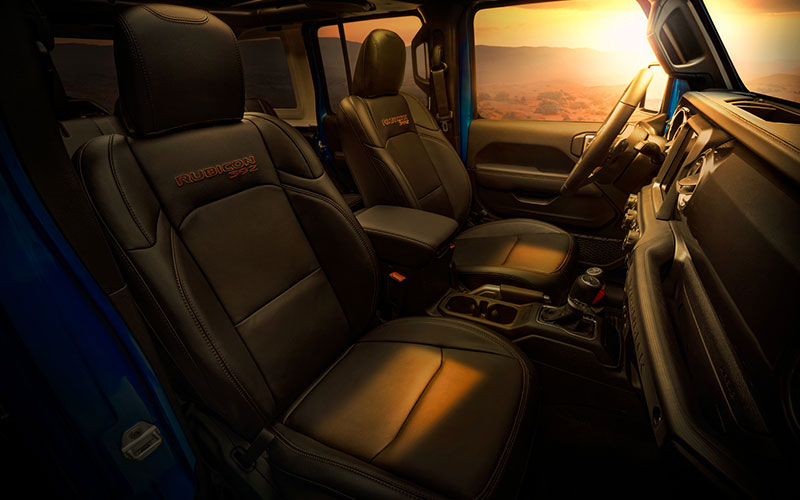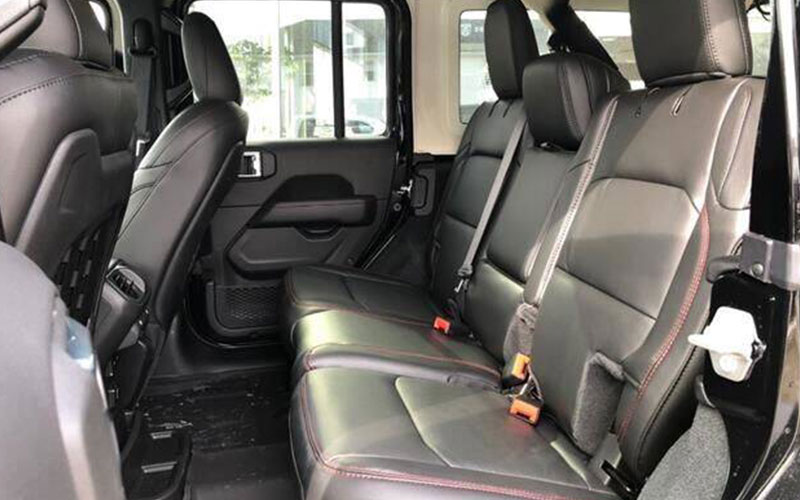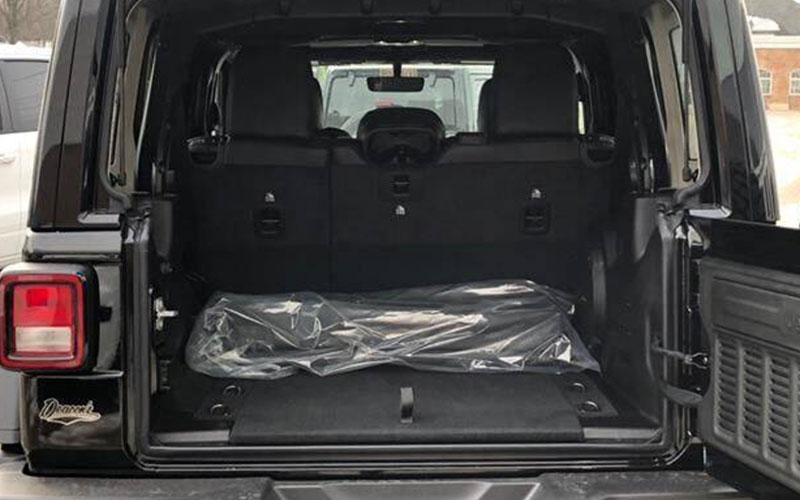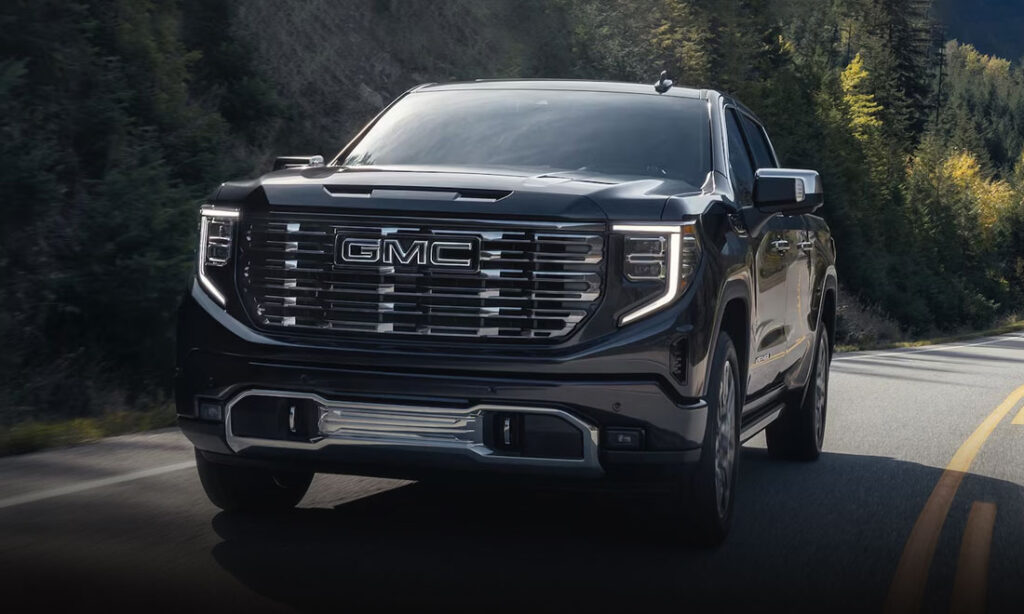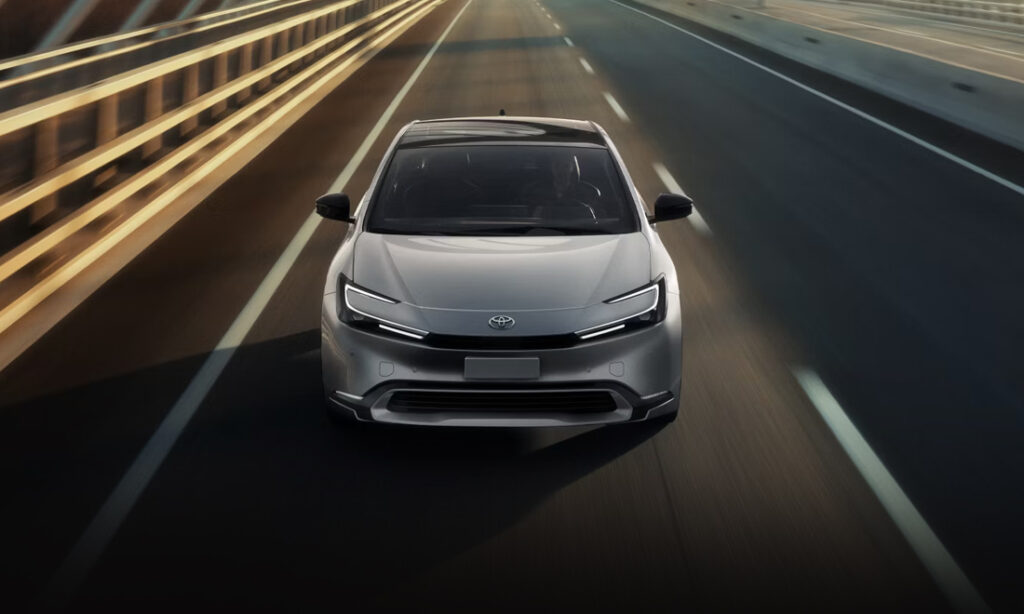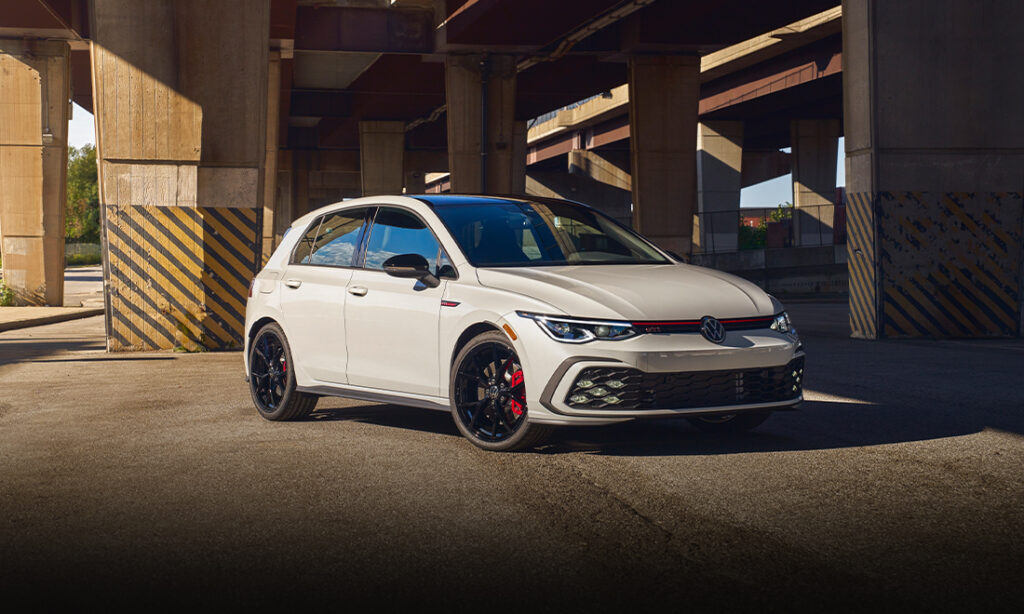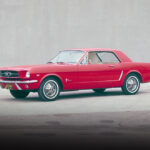New vs Used: Jeep Wrangler
After nearly 80 years, the Jeep Wrangler still delivers a hard-nosed off-roader par excellence. But is it better to buy one new or used?
It’s About Legacy
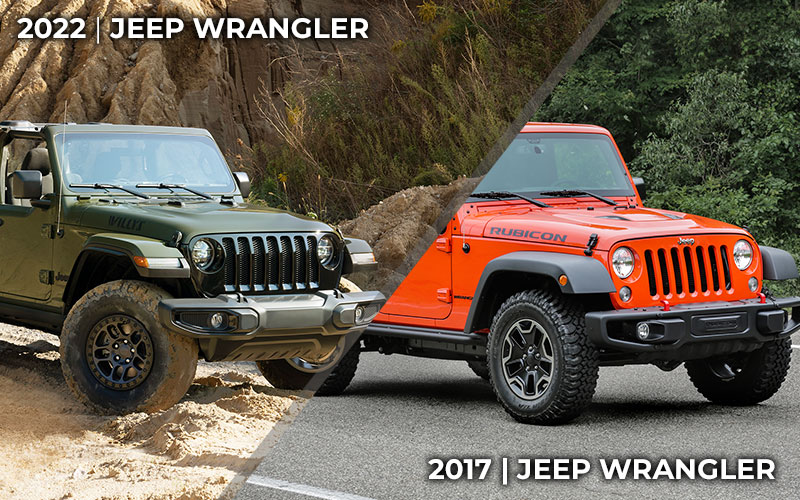
media.stellantisnorthamerica.com | Shop Jeep Wrangler on Carsforsale.com
The Jeep Wrangler can trace its history back to the Willys Jeep of WWII, and that original no-nonsense, go-anywhere off-road ethos has remains true eight decades on. Today, the Wrangler continues to be the segment’s top choice for serious off-roading. Got rocks to climb, rivers to ford, and mud to fling? The Wrangler deserves to be at the top of your short list.
As a consequence of the Wrangler’s popularity, it retains its value like few other vehicles on the market and used examples can command a pretty penny. This makes the decision of whether to buy new or used a very close call indeed. Looking back to the prior generation, say a 2017 model, you can find examples listed today at between $30,000 and $40,000. That’s very close to the bottom end for new 2022 Wranglers, which start at $29,725 for the spartan two-door Sport trim. Given this narrow gap, we thought it would be helpful to walk our readers through the differences between new and used examples to find which if the better value.
Specs
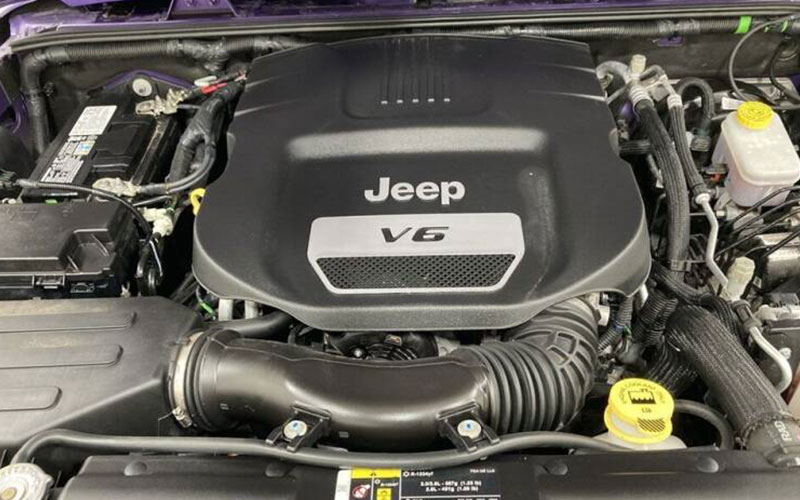
The 2017 Jeep Wrangler features just one powertrain, a 3.6L V6 making 285 horsepower and 260 lb-ft of torque. Four-wheel drive comes standard, as does a six-speed manual transmission (with the option for a five-speed automatic). The two-door version nets 17 city and 21 highway MPG regardless of transmission while the four-door varies only slightly with the manual getting 17/20 MPG and the automatic at 17/21 MPG. Ground clearance varies based on configuration from between 8.3 and 10.0 inches.
The current generation Jeep Wrangler has a lot more to offer with a total of five different powertrain options. They start with the old standby, the 3.6L V6 still making the same 285 horsepower and 260 lb-ft of torque. A six-speed manual is still standard, with a new 8-speed automatic available. Fuel economy comes in at 17 city and 25 highway MPG for the manual and 20/24 MPG for the automatic. This difference is due in part by the mild-hybrid assist that comes with the automatic transmission.
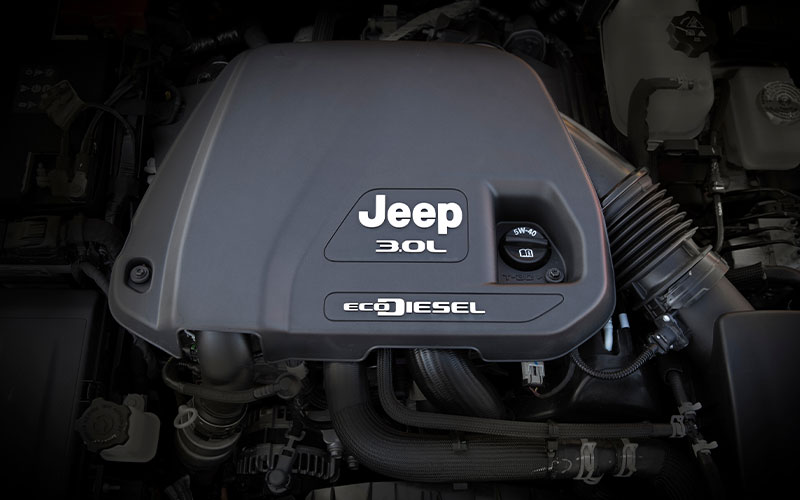
Next is a 2.0L turbocharged four-cylinder with 270 horsepower and 295 lb-ft of torque and for which the eight-speed is the sole transmission. Fuel economy here is 22 city and 24 highway MPG. Then there’s the 3.0L turbodiesel V6 with 260 horsepower and 422 lb-ft of torque. The manual equipped diesel gets 21/26 MPG, and the automatic version a marginally better 22/29 MPG.
For greater efficiency there’s the 4xe plug-in hybrid that combines the 2.0L turbo-four with two electric motors for 375 horsepower and 470 lb-ft of torque. It offers 20 miles of electric-only driving, 49 MPGe, and 20 MPG on gas alone. If power, rather than efficiency is your thing, there’s the range-topping Rubicon 392 that offers a 6.4L Hemi V8 making 470 horsepower and 470 lb-ft of torque. Fuel economy does take a hit, coming in at 13/17 MPG.
Driving & Performance
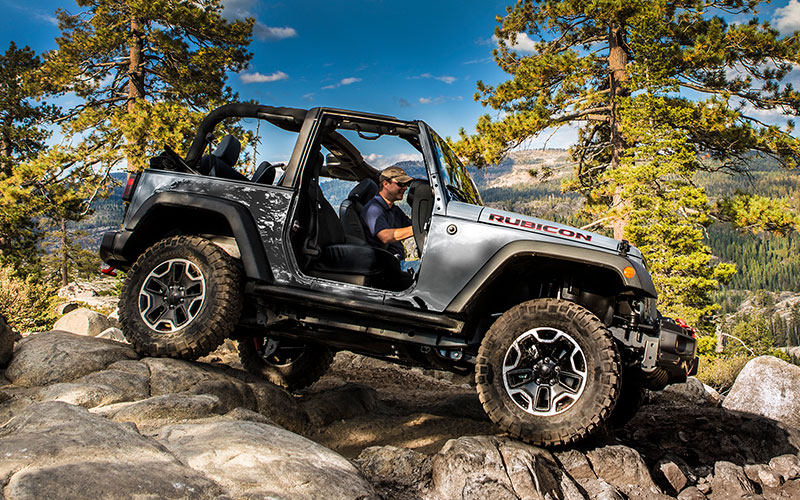
The Jeep Wrangler has always been a vehicle of extremes and the 2017 model is no exception. The off-road capabilities out of the box are a segment benchmark. But at the same time, the Wrangler’s on-road manners are noticeably compromised. With that said, if you’re serious about going off the beaten path, the Wrangler offers a lot to like. First is the standard four-wheel drive, then the 8.3 to 10 inches of ground clearance, the soldi front and rear axles, and hill decent control. The Wrangler’s best numbers are perhaps its approach, break over, and departure angles which break out as 44.3°, 25.4°, and 40.4° respectively. Those are by far the best you’ll find in the segment.
Still, all this off-road readiness makes the Wrangler a bit awkward for regular commuting. Tire and wind noise make a din, even before you’re opting for a cloth top. The Wrangler’s tall stance is great for rock crawling but adds significant lean in cornering. And the articulate, long-traveling suspension makes for a bouncy ride over bumps and potholes. The 3.6L V6 makes good power, and though the five-speed automatic is just fine, the six-speed manual is downright impressive, with good clutch feel (not too heavy or too light) and long throws that make for an engaging drive.
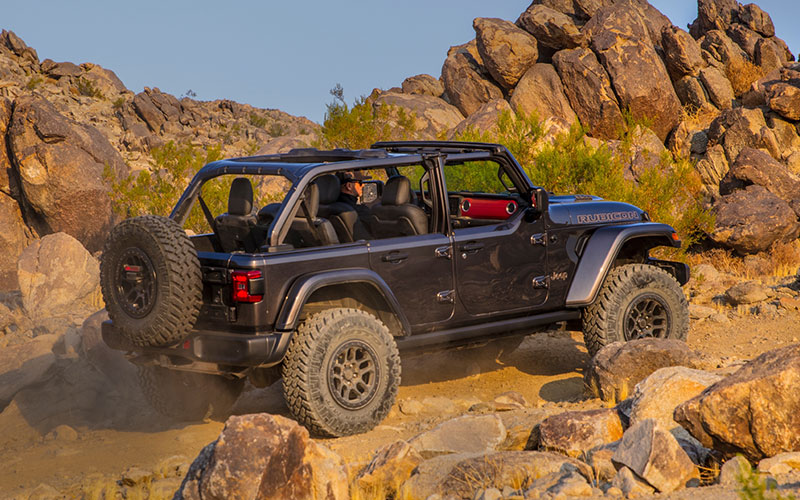
The 2022 Jeep Wrangler spoils with powertrain options, whether you’re looking for the greatest efficiency or serious towing muscle. If you can swing the $54,000 price tag, the 4xe plug-in hybrid offers a potent mix of high torque with great fuel economy. The 3.6L V6 still doesn’t disappoint at the same time that it’s gotten marginally more efficient. The Rubicon’s new Hemi V8 packs a punch but is largely unnecessary (and unnecessarily expensive as you’ll easily find listings cresting the $100,000 mark).
What hasn’t changed is the Wrangler’s basic compromise of off-road capabilities for on-road comfort. If you’re considering the Wrangler as an urban runabout with extra cool factor, you’ll probably be happier elsewhere. But on the other hand, you’re serious about taking the road less traveled or no road at all, the Wrangler should be your first choice to work backward from.
Comfort & Interior
You’ll find the SUV’s utilitarian character continues inside the 2017 Jeep Wrangler. This can be charming when it comes to the soft top, removeable doors, and drain plugs in the floor for hosing out all that mud you’ve driven through. On the other hand, the lack of standard air condition and bare bones safety tech can be frustrating. And yet, there’s a lot to like. Space is generous up front with ample head and legroom, though things do get cramped in the two-door’s backseat. The center stack is laid out intuitively with big knobs and buttons for ease of use. The seats are a low point, however. They lack the degree of support you’d want coming off a day on the trail. For the two-door, cargo measures 12.8 cu-ft behind the rear seats and 56.5 cu-ft total (or 61.2 cu-ft with the rear seats removed). The four-door Unlimited offers a more generous 31.5 cu-ft or 70.6 cu-ft in total.
The 2022 Jeep Wrangler hasn’t changed radically from the prior generation. Knobs are a little less chunky, and a sleeker design (by degrees) allows for a larger touchscreen. These aside, both what we liked and disliked remain nearly identical. The seats, however, have seen an upgrade which makes them much more livable day-to-day. Cargo is more limited in the two-door this time around at 12.9 cu-ft and just 31.7 cu-ft with the rear seats folded down. The Unlimited (four-door versions) remain near the top of the segment at 31.7 cu-ft behind the rear seats and 72.4 cu-ft in total.
Trims & Features
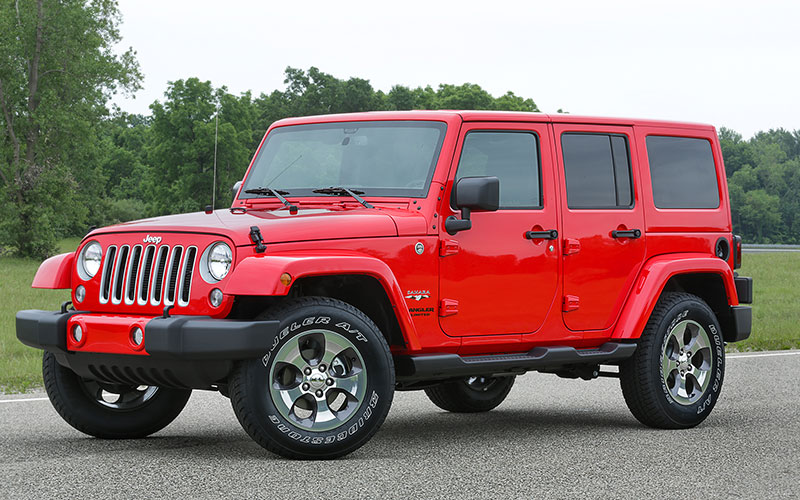
The 2017 Jeep Wrangler offers four basic trim levels: Sport, Sport S, Sahara, and Rubicon. The base Sport trim comes with skid plates, cloth upholstery, a USB port, 8-speaker stereo, and 16-inch wheels. The Sahara trim adds features like air conditioning, power windows and locks, and automatic climate control. Additional options cover leather upholstery and heated front seats. The Rubicon gets additional off-road items like locking front and rear differentials, 4:1 low gearing, and a performance suspension. The Cold Weather package adds heated front seats, remote start, and an engine block heater.
With a new generation and six years in between, the current 2022 Jeep Wrangler greatly expands your buying options, for good or ill. There are a total of thirteen different trims and special editions to choose from ranging from the spartan Sport and Willys Sport trims to three plug-in hybrid versions to the range topping Rubicon 392 featuring that 6.4L Hemi V8.
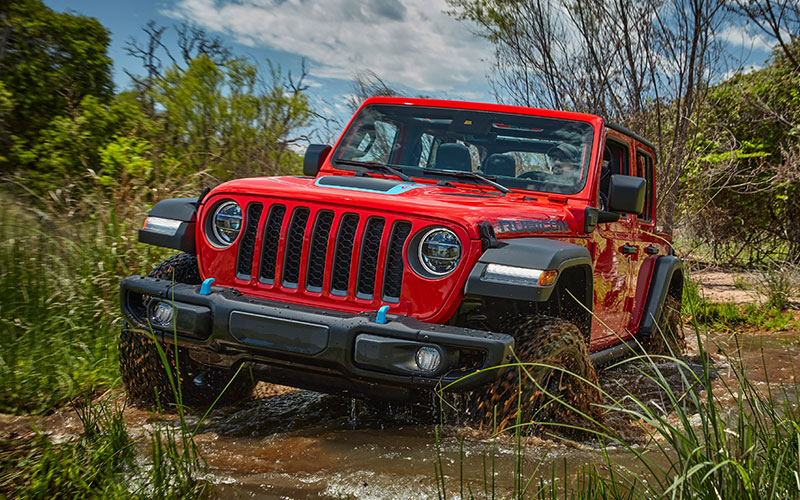
The two-door Sport starts at $29,725, with the four-door jumping to $33,225. The base Wrangler keeps things basic with a 5-inch touchscreen, Bluetooth, two USB ports, 17-inch wheels, manual windows and adjustable seats, skid plates, tow hooks, and a soft top. Only a rearview camera comes as standard safety equipment, an outlier among today’s crossovers. There are safety tech options to be had, including blind spot monitoring, blind spot monitoring with rear cross-traffic alerts, forward collision warning, forward automatic emergency braking, automatic high beams, rear parking sensors, and adaptive cruise control.
The Sport S, at $32,925/$36,425, is probably the best blend of affordability and modern amenities. It adds a 7- or optional 8.4-inch touch screen, Apple CarPlay and Android Auto, air conditioning(!), and power windows. The options list is also long and covers items like a Wi-Fi hotspot, navigation, a 9-speaker stereo, LED headlights, and fog lights. These options become standard on higher trims like the Sahara. The Rubicon ($78,690) tops things out with leather upholstery, heated seats and steering wheel, remote start, and safety items like blind spot monitoring and forward automatic emergency braking.
Closing the Gap
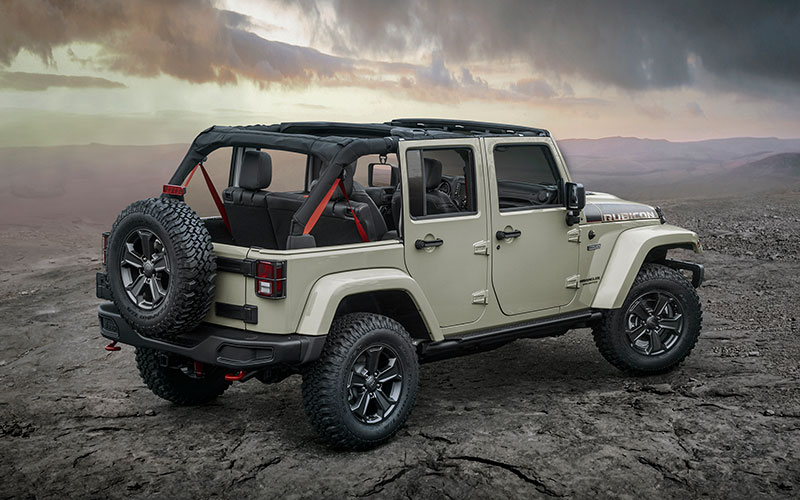
As we mentioned in the introduction, the Jeep Wrangler is one of the most popular vehicles on the used market. The Wrangler already held its value extraordinarily well even before pandemic-related price hikes. Today, it can be hard to tell a new from a used Wrangler based on price alone. With that said, the Wrangler’s overall desirability has ballooned the higher end of the spectrum, with the Sahara trim and 4xe plug-in hybrids going for well over $50,000 and the V8 Rubicon frequently listed for close to or above $100,000.

2022 Jeep Wrangler Sport – carsforsale.com | Shop Jeep Wrangler on Carsforsale.com
If you’re looking at the Wrangler for the right reasons; that is, actually taking it off-road, upgrading the suspension, personalizing it as Jeep owners are wont to do, then you’re probably fine with compromising Apple CarPlay, Wi-Fi hotspots, and other high-falutin’ gizmos. In that case, keep as close to $30,000 as you can for either a decently equipped used example or a lower trim new Wrangler.



